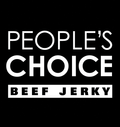Humans have enjoyed versions of beef jerky for thousands of years. Early variations of dried meat can be traced back to the ancient Egyptians, but the closest version to modern day beef jerky started with the indigenous societies of the Andes mountains in modern day Peru.
Cultures from around the world have discovered different ways to preserve meat, and for good reason. The preservation of meat is an effective way to create sustenance that can last for long periods of time. The drying process of meat results in a high protein, low fat, and highly nutritional piece of meat.

This guide will answer all your history of beef jerky questions from who invented beef jerky, where was beef jerky invented, plus some fun beef jerky trivia.
Keep reading for more!
Who invented beef jerky?
The indigenous people in the Andes mountains in modern day Peru invented the earliest versions of modern day beef jerky. The unique climatic conditions of this high altitude region made the ancient jerky production possible. The Quechua, a South American tribe, called it Ch’arki. You can see where the word jerky comes from. The Quechuan word translates into “to burn meat.”
Ch’arki was produced by drying the meat in the hot sun during the day and then freezing it during cold nights. Unlike modern beef jerky, the earliest form of jerky was prepared with bones included, rather than thin strips of boneless meat. The protein source for this early jerky was made with animals from the camelidae family including llamas, alpacas, guanacos, and vicuñas.
The process of air drying meat through alternating between warm, sunny days and cold, freezing nights had distinct advantages. First, it allowed for food preservation at scale. As much as 15% of herds were slaughtered every year for consumption. A significant portion of the meat was used for ch’arki to ensure sufficient food supply throughout the year.
Upon arrival in the New World, the Spanish conquistadors adapted the word ch’arki to charqui. From there, it evolved over the years into modern day beef jerky.
When was beef jerky invented?
The earliest records of ch’arki, the ancestor to modern beef jerky, go back to the early 1550s.
There are even earlier archeological records that indicate that the Ancient Egyptians preserved different meat and produce items by leaving them out in the sun to dry. The importance of preserved foods to Ancient Egyptian culture is exemplified by the abundance of preserved food found in the excavated tombs, some of which remained remarkably intact.
Is beef jerky Native American?
Early Native American tribes made a version of beef jerky, just in a slightly different form. They combined mixed berries, fat, and ground meat to make concentrated small cakes known as Pemmican. The combination of fat and dry meat created a nutrient-dense snack with a long shelf life.
Learn how to Make Your Own Pemmican
This preserved food helped the native tribes get through the winter months. Early settlers learned jerky preparation from the Native Americans and adopted the preservation technique.
Did American Indians smoke meat?
Smoking was a popular preservation technique for various tribes in North America.
Smoking methods varied by tribe—the techniques ranged from a small enclosure to a large fire in the open. Traditional smoking structures included smoke sheds and tipis large enough to smoke large quantities of game.
Bison (or buffalo) was a popular protein source for jerky, but jerky was made with wild game as well. Northwest tribes relied heavily on fish and smoking the annual catch during peak season provided sustenance throughout the year. To answer the question—did Native Americans invent jerky—not exactly, but their smoking of meat for preservation plays an important role in the development of modern day beef jerky.
The first recorded use of the word jerky appeared on John Smith’s map of Virginia in 1612 when he wrote “as drie as their jerkin beefe in the West Indies.”
How did cowboys make jerky?
Cowboys, called “cow hunters” in the 1820s, carried jerky or salted beef when they were moving cattle. The cowboys prepared the beef jerky through a variety of techniques that included sun-drying, smoking, and salting.
They would slaughter the animal—cattle, bison, deer, elk, or antelope—and strip or jerk the meat. Today, cowboy style jerky is an old fashioned style of beef jerky that is tougher, drier, and takes longer to chew. It’s also delicious.
Is beef jerky an American thing?
Despite roots spreading around the world, beef jerky today is a uniquely American product. It has reached a critical mass of popularity. Some would even argue we are living in a Jerky Renaissance.

A few popular trends — such as the rise of snacking and desire for high protein snacks — have expanded popular demand, fueling flavor and texture innovation. The growing diversity of jerky products has attracted non-traditional consumers who now enjoy the benefits of jerky. In today’s market, there is a jerky product for everyone.
At People’s Choice Beef Jerky, we celebrate the rich history of beef jerky by focusing on what we’ve done for over 85 years: handcrafting simple and honest interpretations of the best beef jerky. We are proud to consider ourselves part of this rich and varied history and we look forward to its bright future.


